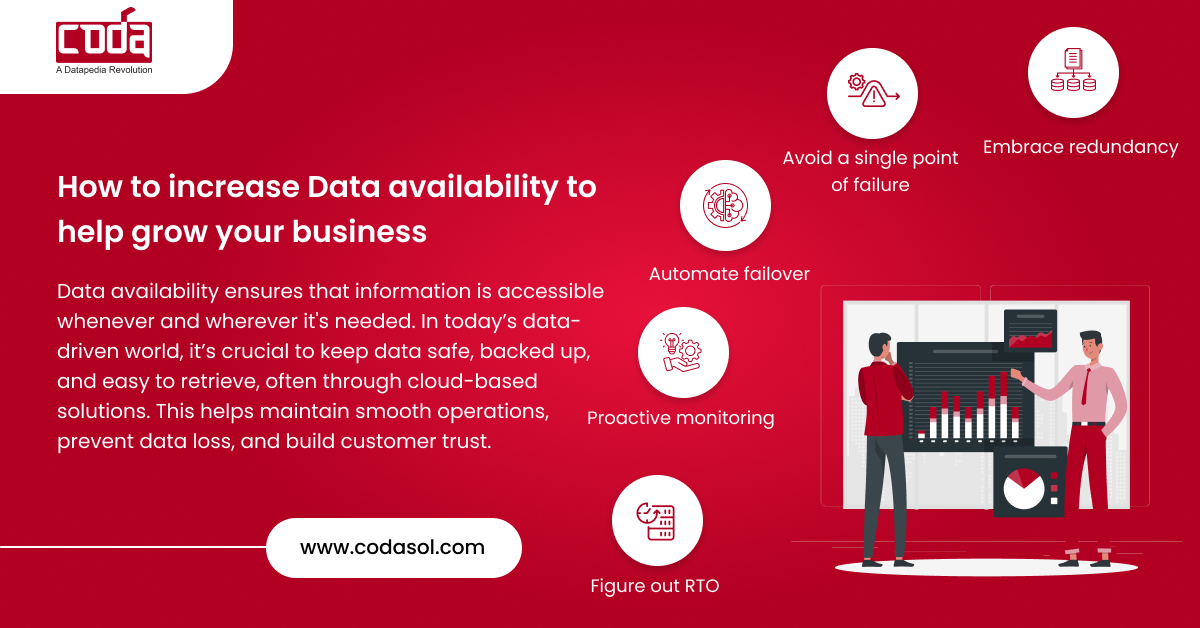What is Data availability?
Data availability is the process of making data available on all ends with easier accessibility. In the evolving times of enterprises depending on data for insights, it is vital to accumulate data as much as possible.
When the chance of data getting lost is higher, it’s always good to have a backup or a cloud-integrated tool. So, for better results and the continued trust of your customers, you need to maintain data without any halt.
Why is Data availability important?
Power outages and server errors can occur when there is difficulty in connecting to the network. To some extent, it’s always better to have an alternative solution, especially in industries where data is needed relentlessly. You cannot avoid such situations.
Having a high availability of data means they are ready to use and manage at any time of the day. It will make your customers rely on you when all else fails. It will give them a chance to depend on a trustworthy entity like yours.
It will especially come in handy for the healthcare sector where patient records are needed and to be ready all the time.
How to increase Data availability?
So now we know the importance of having a high availability of data. How to increase it then? Here are some guidelines for you to follow to achieve that:
Embrace redundancy
Every Master data management tool talks about avoiding redundancies. So why is it embraced when it comes to making high availability of data?
One of the basic methods to increase data availability is to have copies of your data in either the same database or in a different source in software. Now it may be tempting to have multiple data even though they are redundant. But it can consume a lot of time to maintain and manage simultaneously along with the main one.
It will also be challenging if you don’t want to spend much and prefer to have cost-effective outcomes. You will need extra hands, time, and money to maintain multiple quality datasets. You have to stay precautious even if it’s for that one time when you will run out of or lose the needed data and face monetary loss.
Avoid single point of failure
Let’s say you took the step to make your data available by introducing redundancies. You store them in the same database or even multiple databases. But you still have a single source of network or server. Then, if one thing malfunctions, the chance of everything collapsing altogether is very much possible.
So, it’s important to not only rely on redundancy but concentrate on other factors alongside while planning to increase your data availability. Always be ready for a disaster and have all your plans in place to use whenever needed. You can never go wrong with too much precaution and planning for possible challenges in the future.
Automate failover
While making sure to have all the backups and stand-by in place, it’s equally necessary to automate them. Identifying the threat or the defects manually in times of crisis will take much time and result in loss of energy and cost.
Failover is having that backup that can be launched into action when something unintended occurs and disrupt the system. Uninterrupted access should be the main aim at any given point of maintaining data in your organization.
Proactive monitoring
Making your data available and preparing for any disaster should be the top priority. To maintain the quality and ensure the working of it, and not make it turn into a waste of source, it’s important to monitor data proactively. It can be done by making sure by monitoring the disk space, memory, and commands.
You can do it by having security alerts that would alarm you while predicting an impending threat. It’s crucial to have backup plans. But it’s better to save your data from disaster if possible.
Figure out RTO
RTO is Recovery Time Objective meaning figuring out the essentials to keep your business running when a disaster occurs unexpectedly. Depending on the nature of the organization, the need for data varies with time.
Some organizations can run without having data available for a week, some a day or two, while others cannot survive after an hour. Not knowing your RTO can create a huge loss.


